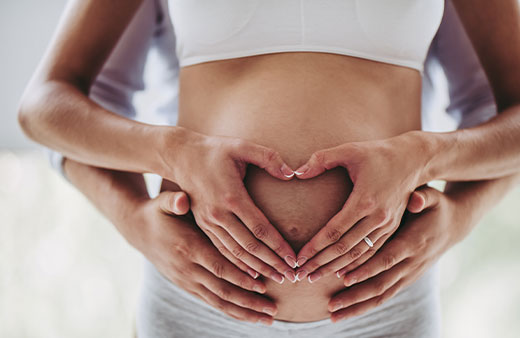Hormone Monitoring is Essential During IVF say IVF Specialists
Assisted reproductive technology (ART) treatments, particularly in vitro fertilization (IVF), have become essential for many couples facing infertility. However, as common as these treatments are, they come with risks, one of the most severe being ovarian hyperstimulation syndrome (OHSS). This is where hormone monitoring, especially tracking estradiol (E2) levels, plays a vital role. By using regular hormone monitoring during ovarian stimulation, fertility specialists can mitigate the risk of OHSS while optimizing IVF success rates.
The Role of Hormone Monitoring in IVF
Ovarian stimulation in IVF aims to produce multiple eggs for fertilization, significantly increasing the chance of a successful pregnancy. However, stimulating the ovaries with gonadotropins (hormones that stimulate the production of eggs) is a delicate balance. If too much stimulation occurs, patients are at risk of developing OHSS, a potentially life-threatening condition where the ovaries become swollen and painful, often leading to hospitalization.
To prevent this, monitoring hormone levels throughout the IVF cycle is crucial. While ultrasounds are typically used to measure follicle size and number, hormonal monitoring, especially estradiol (E2), provides critical insights into how the ovaries are responding to stimulation.
Estradiol is a key marker of follicular function and development. By tracking E2 levels, clinicians can gauge how many follicles are maturing and adjust hormone dosages accordingly. This approach allows for personalized treatment plans, reducing the risk of overstimulation and preventing OHSS.
Global Practices: Hormone Monitoring in ART
A global survey published in Frontiers in Endocrinology (2023) by Sachs-Guedj et al. (doi: 10.3389/fendo.2023.1260783) explored the real-world practices of hormone monitoring during ovarian stimulation in ART. The survey, which included responses from ART professionals worldwide, revealed that 79.5% of respondents use hormone monitoring (HM) during IVF cycles. Of these, estradiol (E2) was the most frequently monitored hormone, particularly on or just before the day of ovulation triggering.
The survey highlighted that while ultrasound (US) is almost universally used to track follicular growth, hormone monitoring, particularly for estradiol, plays a pivotal role in adjusting treatment protocols. Clinicians commonly adjust gonadotropin doses based on E2 levels, especially during the critical phase leading up to final oocyte maturation.
Estradiol (E2): A Key Predictor of OHSS
Estradiol serves as a key predictor of OHSS risk. High E2 levels indicate that a large number of follicles are maturing, which is often associated with an increased risk of OHSS. The survey found that 74% of respondents use E2 measurements to predict the likelihood of OHSS.
OHSS is most likely to occur when estradiol levels spike just before ovulation triggering. By carefully monitoring E2 levels during this time, clinicians can adjust gonadotropin doses, delay or modify ovulation triggering methods, and even decide to freeze all embryos rather than proceed with a fresh embryo transfer, which further reduces OHSS risk.
For instance, clinicians might opt for a GnRH agonist trigger instead of the standard human chorionic gonadotropin (hCG) trigger when estradiol levels are dangerously high, as this has been shown to reduce the incidence of OHSS.
Current Evidence and Challenges
The Sachs-Guedj survey shows that many clinicians globally see overwhelming value in monitoring hormones, particularly estradiol during ART treatment despite guidelines from the European Society of Human Reproduction and Embryology (ESHRE) in 2019 suggesting that adding hormone monitoring to ultrasound during ovarian stimulation may not significantly impact pregnancy rates or reduce the risk of OHSS.
The reason? Personalized treatment. While generalized guidelines may not show a universal benefit, individualizing hormone monitoring allows for tailored adjustments that cater to a patient's specific response to stimulation.
Further research has also supported the importance of individualized hormone monitoring. For example, studies have shown that low estradiol levels early in the stimulation cycle are associated with cycle cancellation and poorer outcomes, while very high levels can lead to complications like OHSS. Hence, balancing E2 levels is crucial for the success and safety of the IVF process.
Preventing OHSS Through Estradiol Monitoring
OHSS remains one of the most significant concerns in IVF treatment, and hormone monitoring, particularly estradiol, is essential for mitigating this risk. By closely tracking E2 levels during ovarian stimulation, clinicians can take several preventative steps, including:
- Adjusting Gonadotropin Dosages: If E2 levels rise too quickly, the dose of stimulating hormones can be reduced to slow follicular growth and decrease OHSS risk.
- Trigger Modifications: If estradiol levels remain high, clinicians may switch to a GnRH agonist trigger instead of the traditional hCG, which has been associated with a lower risk of OHSS.
- Freeze-All Strategy: In cases where E2 levels indicate a high risk of OHSS, clinicians can choose to freeze all embryos and delay transfer to a future cycle, significantly reducing the risk of severe OHSS symptoms.
Conclusion
The Sachs-Guedj survey highlights that while there is no one-size-fits-all approach in IVF treatments, the value of hormone monitoring, particularly estradiol (E2), cannot be understated. Regular estradiol measurements enable clinicians to personalize ovarian stimulation protocols, reduce the risk of complications like OHSS, and ultimately improve patient outcomes.
As ART continues to evolve, it is clear that hormone monitoring will remain a key tool for optimizing IVF treatment. For patients undergoing IVF, understanding the role of estradiol monitoring and its significance in preventing OHSS can provide peace of mind, knowing that their treatment is being carefully tailored for safety and success.
In an ever-evolving field, more research is needed to further refine the use of hormonal monitoring, but the evidence so far suggests it is an essential component of individualized, safe, and effective IVF treatment.
Cyclic Diagnostics offers point-of-care blood hormone testing solutions to ART clinics that promise hormone results within just 30 mins of blood collection directly in the clinic allowing fast clinical decisions and an improved patient experience. Get in touch using the contact form to learn more about our products.



.jpg)